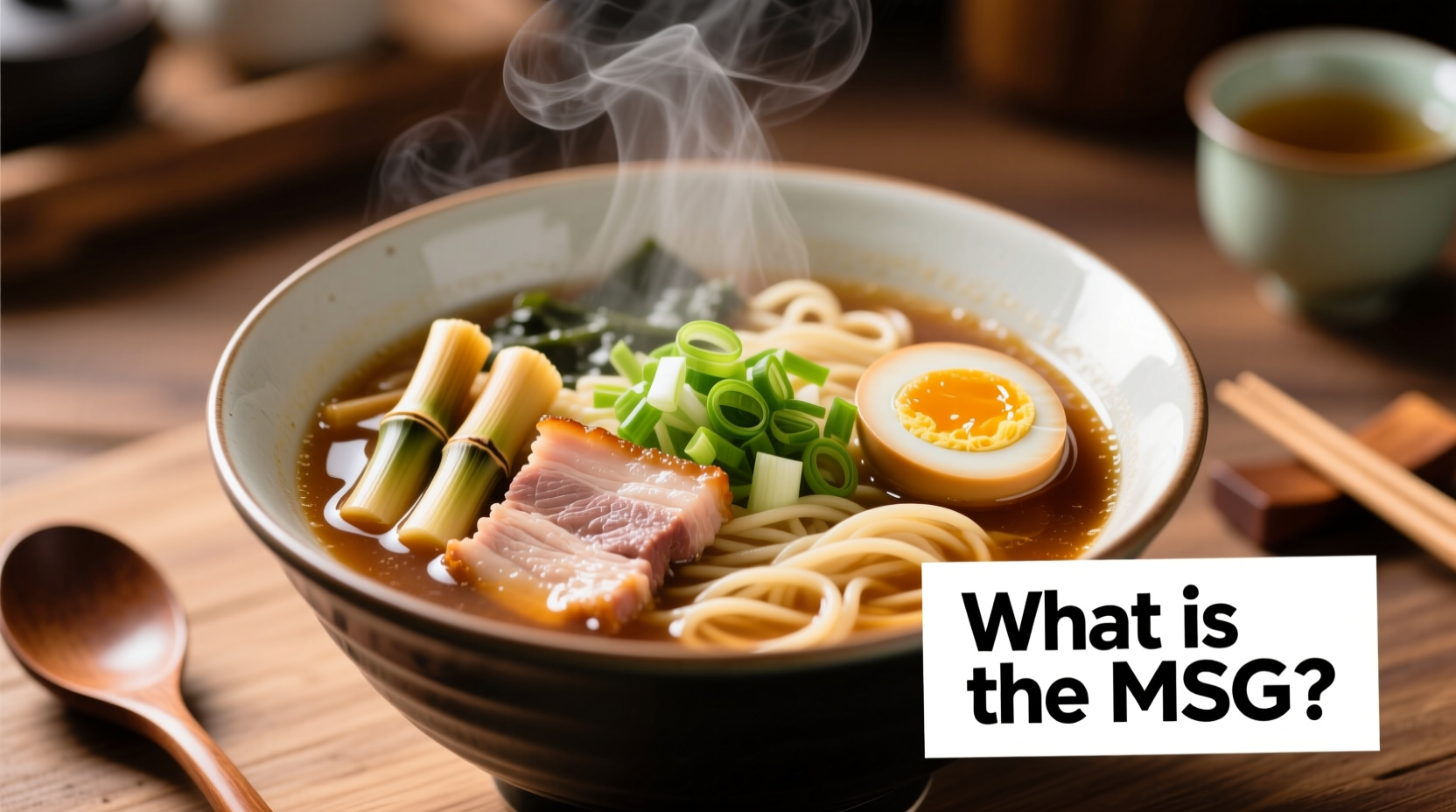Ever wondered why certain dishes taste so deeply satisfying? You've likely encountered monosodium glutamate (MSG) without realizing it. Despite persistent myths, this flavor enhancer has been thoroughly studied for decades. In this comprehensive guide, you'll discover exactly what MSG is, where it appears in your food, and what science actually says about its safety—cutting through the misinformation that's clouded this topic for years.
The Science Behind MSG: More Than Just a Flavor Booster
MSG isn't some mysterious chemical concoction—it's simply sodium combined with glutamate, an amino acid your body produces naturally. Glutamate exists in nearly all protein-containing foods, from tomatoes and cheese to mushrooms and breast milk. When isolated and combined with sodium, it becomes monosodium glutamate, which delivers that distinctive umami taste—the fifth basic taste alongside sweet, sour, salty, and bitter.
Discovered in 1908 by Japanese chemist Kikunae Ikeda, MSG works by stimulating specific receptors on your tongue that detect glutamate. This triggers the savory, mouthwatering sensation we associate with perfectly cooked meats, aged cheeses, and ripe tomatoes. Unlike artificial flavors, MSG doesn't add its own taste—it amplifies existing flavors, making foods taste more complete and satisfying.

MSG Timeline: From Kitchen Discovery to Global Controversy
The journey of MSG reveals how scientific discovery can become entangled with cultural misunderstandings:
- 1908: Professor Kikunae Ikeda isolates glutamate from kombu seaweed and patents MSG production
- 1940s-1950s: MSG becomes widely used in processed foods and restaurant cooking globally
- 1968: First mention of "Chinese Restaurant Syndrome" in a letter to New England Journal of Medicine
- 1990s: Extensive scientific reviews begin debunking health claims
- 2017: European Food Safety Authority reaffirms MSG safety at normal consumption levels
- 2023: Global regulatory agencies maintain consistent position on MSG safety
Where You'll Find MSG: Natural Sources vs. Added Forms
MSG appears in two primary forms in your diet—naturally occurring and added. Understanding both helps make informed choices without unnecessary fear.
| Naturally High in Glutamate | Common Processed Foods with Added MSG | Hidden MSG Sources (Label Variations) |
|---|---|---|
| Aged cheeses (Parmesan, Roquefort) | Instant noodle seasonings | Hydrolyzed vegetable protein |
| Tomatoes and tomato products | Processed meats (sausages, deli meats) | Autolyzed yeast extract |
| Mushrooms (especially shiitake) | Chips and savory snacks | Calcium caseinate |
| Soy sauce and fish sauce | Canned soups and broths | Textured protein |
| Walnuts and other nuts | Seasoned crackers and snacks | Yeast extract |
MSG Safety: What Major Health Authorities Actually Say
Despite persistent myths, scientific consensus on MSG remains remarkably consistent. The U.S. Food and Drug Administration classifies MSG as "generally recognized as safe" (GRAS), a status it's held since 1958. This position is shared by numerous global health organizations:
- World Health Organization: Joint FAO/WHO Expert Committee on Food Additives concluded MSG presents no safety concern at customary consumption levels
- European Food Safety Authority: Established an acceptable daily intake of 30 mg per kilogram of body weight, far exceeding typical consumption
- American Medical Association: No scientific evidence supports MSG as a significant health risk for the general population
Multiple double-blind, placebo-controlled studies—the gold standard in medical research—have failed to consistently reproduce symptoms attributed to "MSG sensitivity." When symptoms do occur in sensitive individuals (a small minority), they're typically mild and short-lived, similar to reactions some people experience with other common foods.
Practical Guidance: Making Informed Choices About MSG
You don't need to fear MSG, but understanding how it appears in your food helps make conscious choices. Here's how to navigate MSG in your diet:
Reading Labels Like a Pro
While "monosodium glutamate" must appear on labels when added directly, be aware of alternative ingredients that contain free glutamate. Check for hydrolyzed proteins, yeast extracts, and certain seasonings that may contain naturally occurring glutamate.
Understanding Real Sensitivities
True MSG sensitivity affects a small percentage of people. If you suspect sensitivity, work with a healthcare provider to conduct a controlled elimination diet rather than making broad assumptions. Most people who believe they're sensitive to MSG don't experience symptoms under controlled testing conditions.
Balancing Your Umami Experience
Instead of focusing solely on avoiding MSG, consider how to incorporate natural umami sources into your cooking. Simmering bones for broth, using tomato paste in sauces, or adding mushrooms to dishes all boost natural glutamate without processed additives—giving you control over your flavor experience.
Common Questions About MSG in Food
Is MSG bad for your health? Extensive research shows MSG is safe for most people when consumed in normal amounts. Major health organizations worldwide agree it's not associated with serious health risks.
Why does MSG have such a bad reputation? The "Chinese Restaurant Syndrome" myth originated from an unverified letter in 1968 and spread through media without scientific backing. Cultural biases and misunderstanding of early, poorly designed studies contributed to persistent misinformation.
How can I tell if food contains MSG? Check ingredient labels for "monosodium glutamate" or related terms like hydrolyzed protein, yeast extract, or calcium caseinate. In restaurants, you can ask about MSG use, though many establishments now avoid it due to consumer concerns despite its safety.











 浙公网安备
33010002000092号
浙公网安备
33010002000092号 浙B2-20120091-4
浙B2-20120091-4